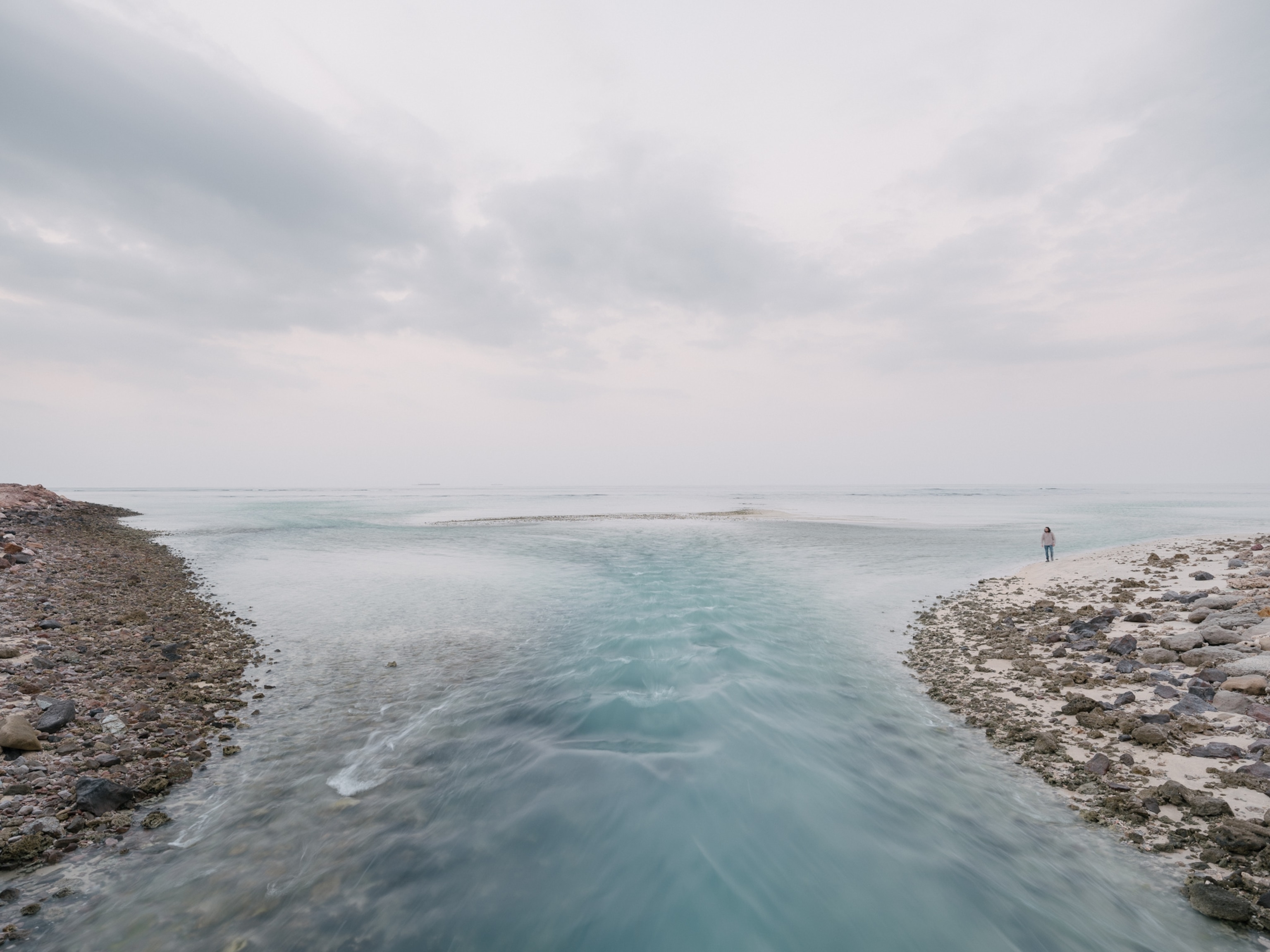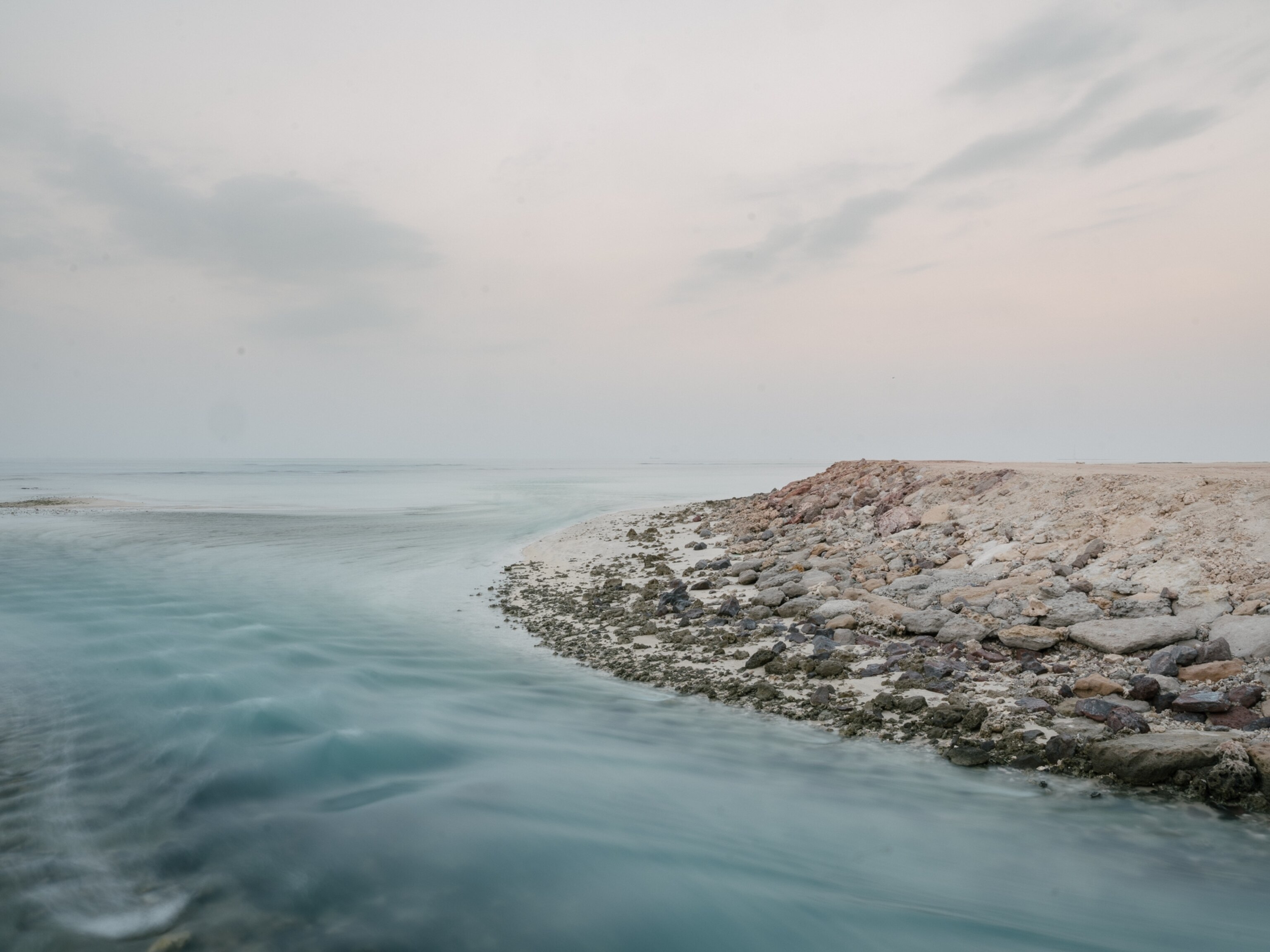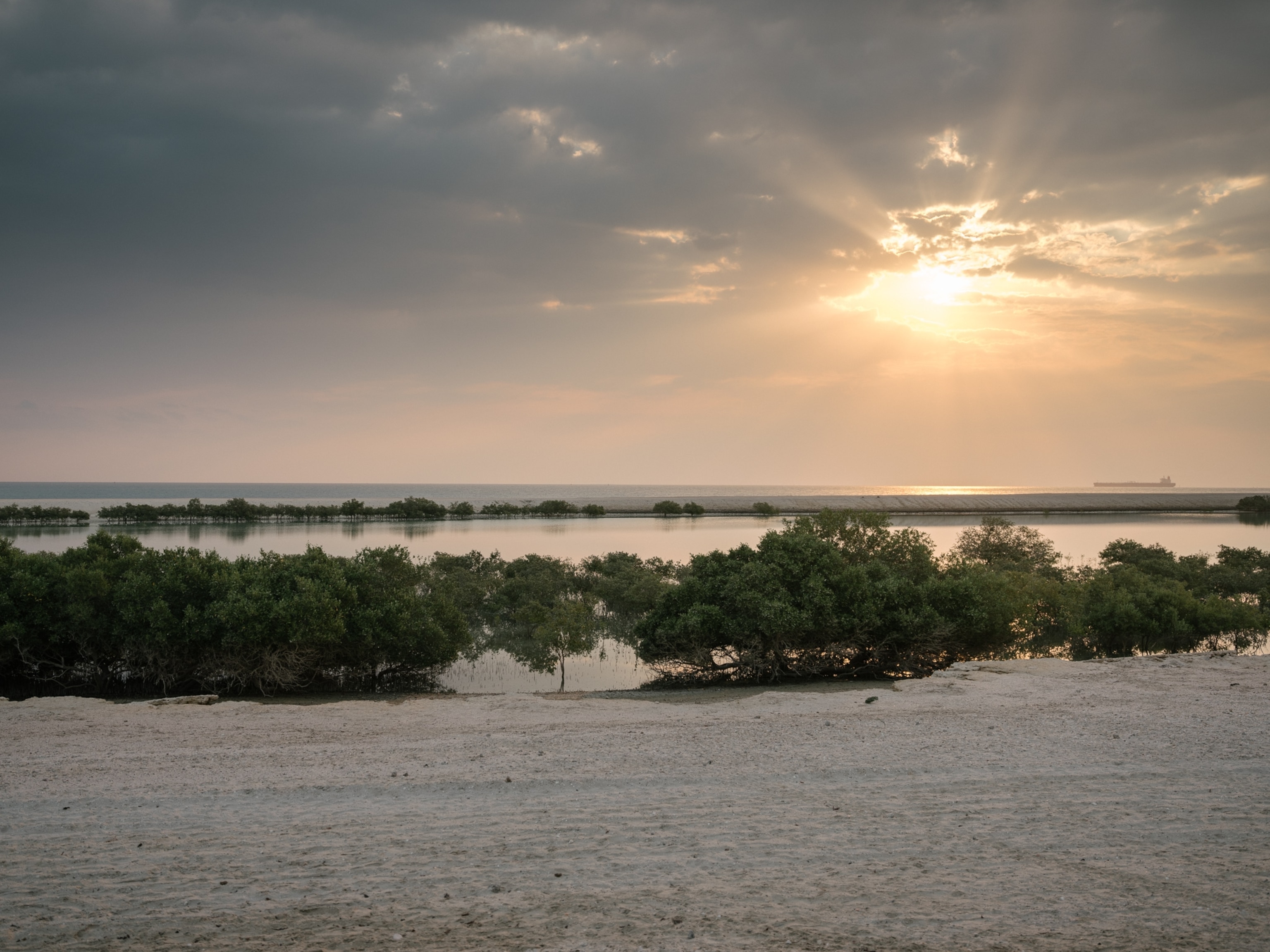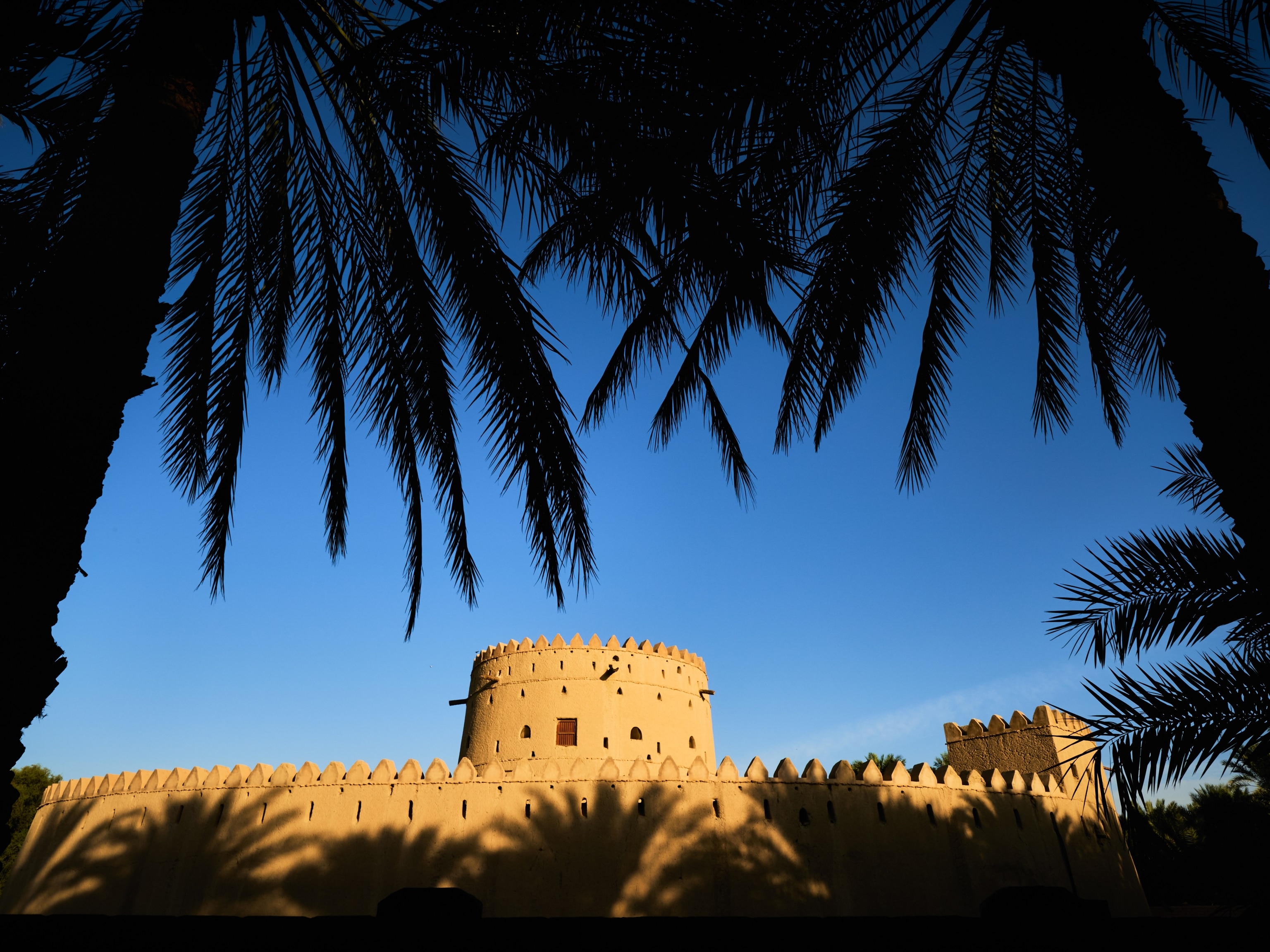
Inside the Magical Island of Sir Bani Yas
Due to decades of conservation work, the island is now home to thousands of large free-roaming animals and several million trees and plants.
If you build it, as that popular saying goes, they will come. No place is that clearer than Sir Bani Yas, an island about 150 miles southwest of the United Arab Emirates capital of Abu Dhabi.
It’s certainly not your standard stop in the desert.
Not long ago, this 30-square-mile island—the biggest of eight Desert Islands just offshore—was abandoned. The Bani Yas tribe, who first moved here 7,000 years ago, left it for good at least a century ago.
In the early 1970s, you could still see why. There were no trees or freshwater sources here; just craggy rocks and bare shorelines lapped by the waves of the Arabian Gulf.

That’s when Sheikh Zayed bin Sultan Al Nahyan, the UAE’s founder (whose likeness is still a constant sight 14 years after his death) visited and made a bold plan. He’d transform it into a nature reserve to give sanctuary to endangered animals of the UAE, Africa, and beyond.
He did so because he believed a country isn’t measured by its size, but instead by its heritage and culture. The disappearing wildlife of the region played a huge part of that heritage in his view, demonstrated by an array of projects (including the Al Ain Zoo).
Now Sir Bani Yas is home to luxury resorts and a savanna-like reserve for 16,000 animals. If you squint, you can almost mistake the scene of oryxes, gazelles, hyenas, jackals, and cheetahs for a Kenyan savanna. A guide told me over 2.5 million trees—like the umbrella thorn acacia or the gum tree that the eland antelope are so drawn to—have been planted by hand. The pipeline system to irrigate this vast area extends over 73,000 miles. In addition, the resorts plant a mangrove for every guest.
What to See and Do

The Arabian Wildlife Park (as covered in our story of reserves around the Abu Dhabi region) is the highlight of any visit. Up to half a dozen guests jump into an open-sided Land Cruiser to make leisurely 90-minute drives. Wildlife-spotting opportunities are nearly constant, including reticulated giraffes and the park’s three cheetahs, who sometimes linger over a kill.
On my ride at dusk, I saw scores of emus, Arabian oryxes, Arabian mountain gazelles (the namesake of Abu Dhabi), axis deer, and urial sheep from Iran locking horns. I also saw a couple cheetah brothers napping by the road.
Many activities at the resorts center on the sea. There is snorkeling, sea kayaking, and paddle boarding to consider, plus swimming pools and nice beaches. Horse rides that take you by wildlife and over dunes are among other options.

One interesting guided history tour offers a closer look into the island’s Bronze Age roots. So far, a few dozen archaeological sites have been uncovered here, my guide told me, including a Christian monastery set up by monks 1,400 years ago. One of the earliest written records of the island came in 1590, when Venetian jeweler Gasparo Balbi described an island around which pearls were found.
A great option to start the day is a guided walk through a narrow, lunar-like wadi (valley or ravine). The 90-minute walk rises slightly. It passes twisting rock patterns and shadowy crags that boast a rainbow of colors from the reddish hues of iron mixing with yellows from sulfur, purples from magnesium, and some sparkle from hematite on the red-rock floor.
This all happens to be in the middle of the wildlife park filled with thousands of roaming animals.

“Sometimes we come up on something,” my guide tells me casually as we pass an old gazelle horn. “Like an oryx—or a cheetah.”
She told me not to worry.
“If so, we’ll just get out of its way.”
Getting Here
Guests of the resorts, run by the Thai group Anantara, get here on a two-and-a-half-hour drive from Abu Dhabi via the E-11 highway (just past the refinery town of Ruwais recently covered by William T. Vollmann in Harper’s), then take the Jebel Dhanna jetty road (exit 113) to hop onto one of the four short, daily ferry rides (departing at noon, 3 p.m., 6 p.m., and 11 p.m.).
Where to Stay

Three resorts dot different parts of the island. Al Yamm offers 30 villas with porches facing white-sand beaches. The safari-style Al Sahel has 30 more villas, set in the middle of the savanna, while Desert Islands is a bigger resort, set up at Sheikh Zayed’s former vacation home on the north shore.
Staff transfer guests between resorts, so you can choose between Italian, Arabic, and African-themed restaurants.
Robert Reid is a digital nomad and editor-at-large for National Geographic Traveler. He's based in Portland, Oregon. Follow his next travel experiences on Instagram and Twitter.

